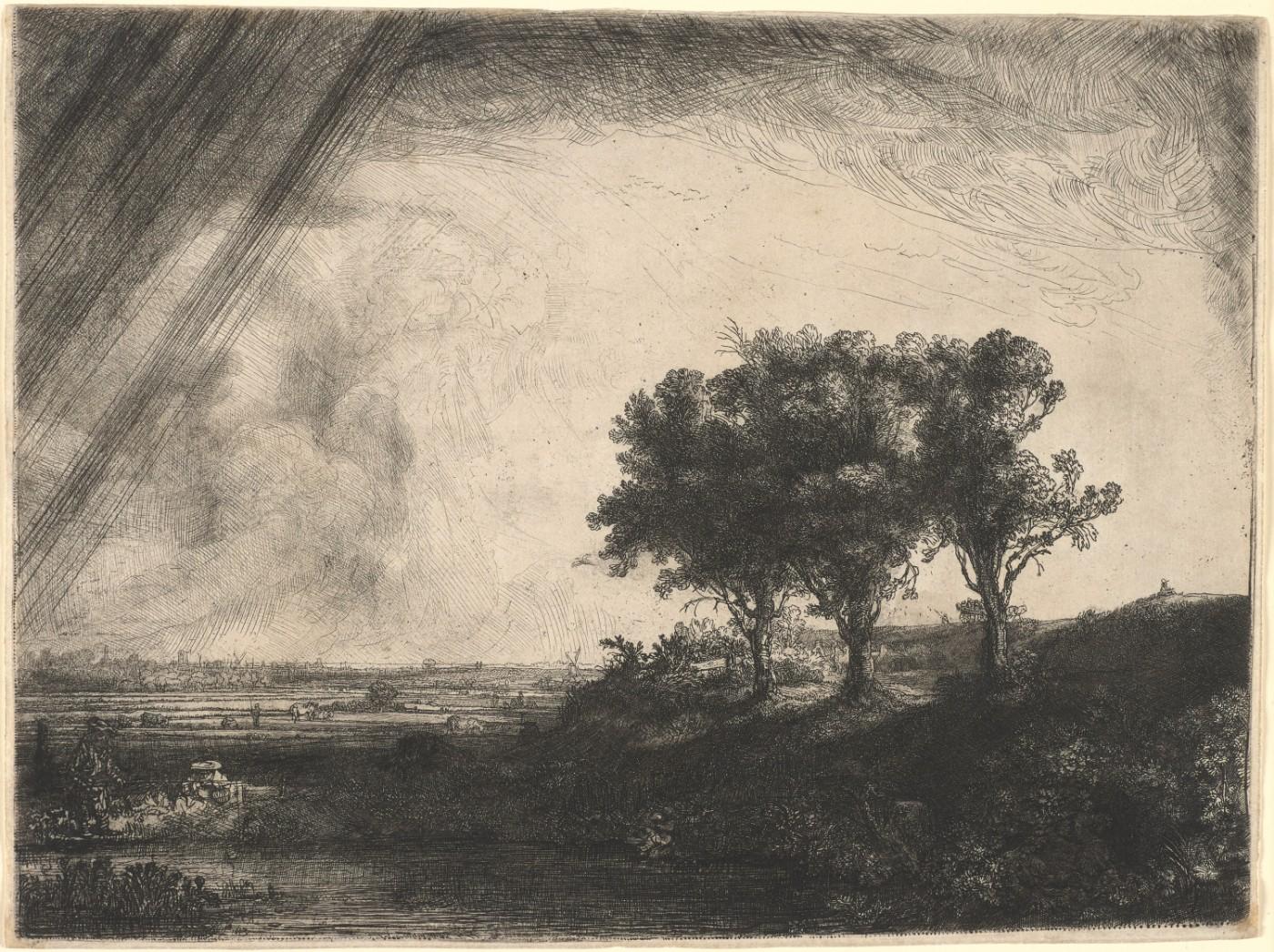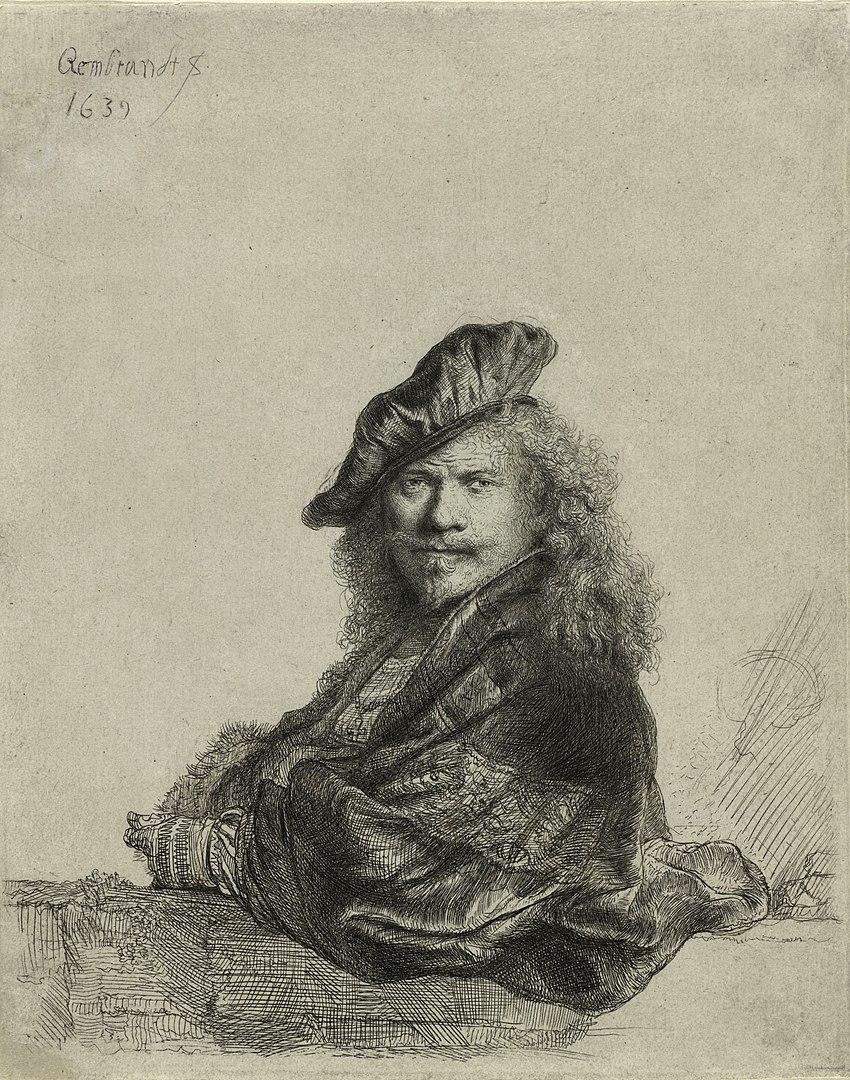Landscape with Three Trees, Rembrandt’s largest etched landscape, a masterful combination of technical virtuosity and skillful composition, was recently acquired by the Princeton University Art Museum, which holds 70 of the 300 prints Rembrandt created during his long career. The museum collection ranges from several of Rembrandt’s earliest self-portraits and genre studies to some of his greatest late religious compositions. The Three Trees joins the only other landscape etching in the Museum’s collection, Landscape with a Thatched Cottage (1641), acquired in 1960. The Three Trees skillfully combines drypoint, engraving, and varied line depth to create an arresting atmospheric composition.
“This exceptional impression of one of Rembrandt’s most iconic works in any medium represents the artist’s unrivaled emotional acuity and technical innovation in full bloom,” said James Steward, Nancy A. Nasher–David J. Haemisegger, Class of 1976, director. “The artist’s rare work in landscape is perhaps his most prized, and we believe this to be one of the greatest works of landscape art in the European tradition, so we are delighted to have been able to acquire it.”




























